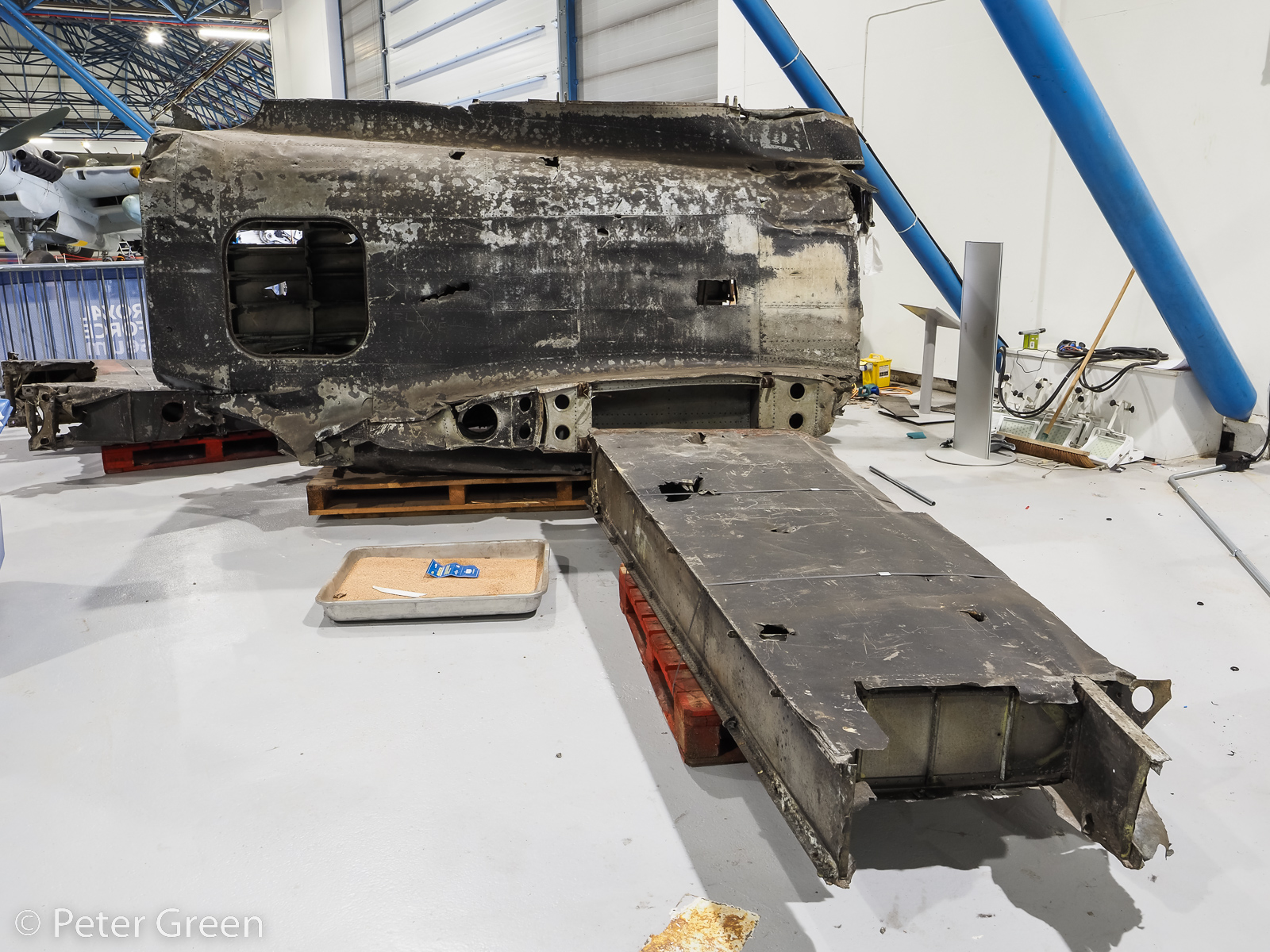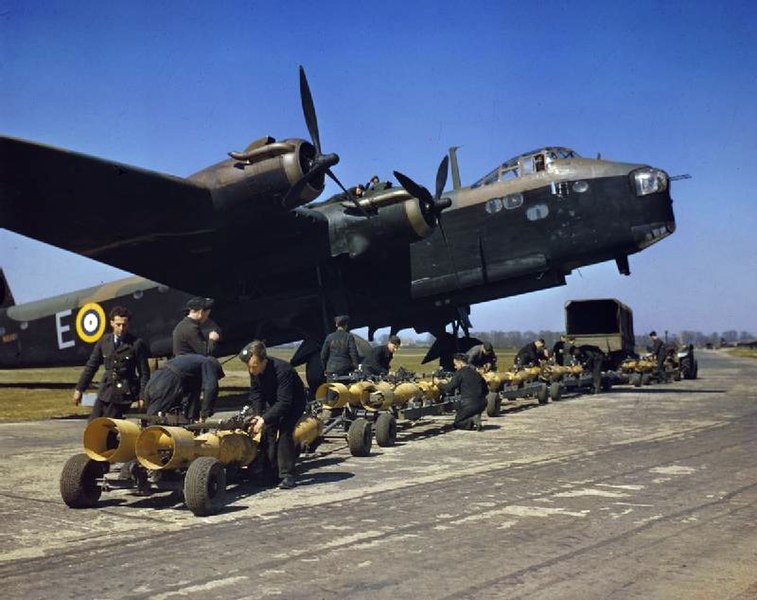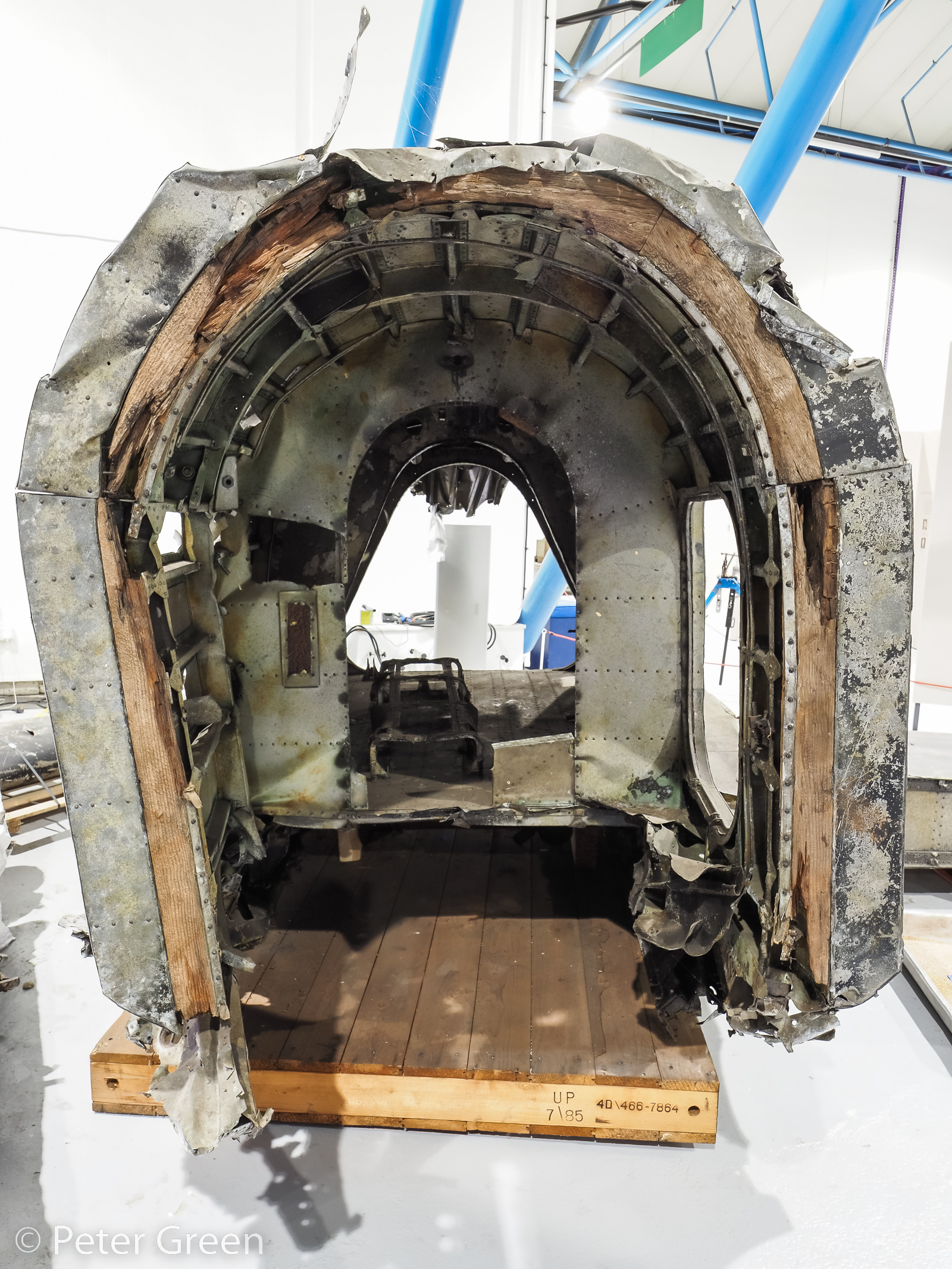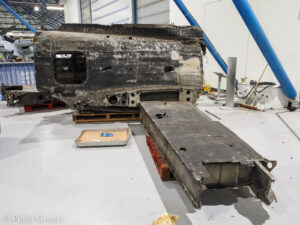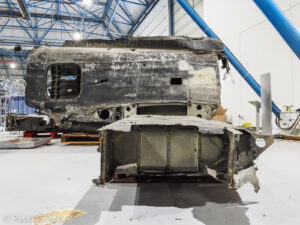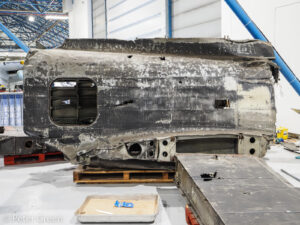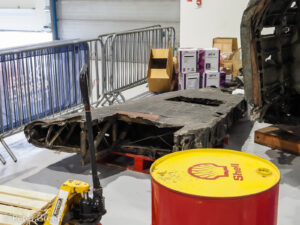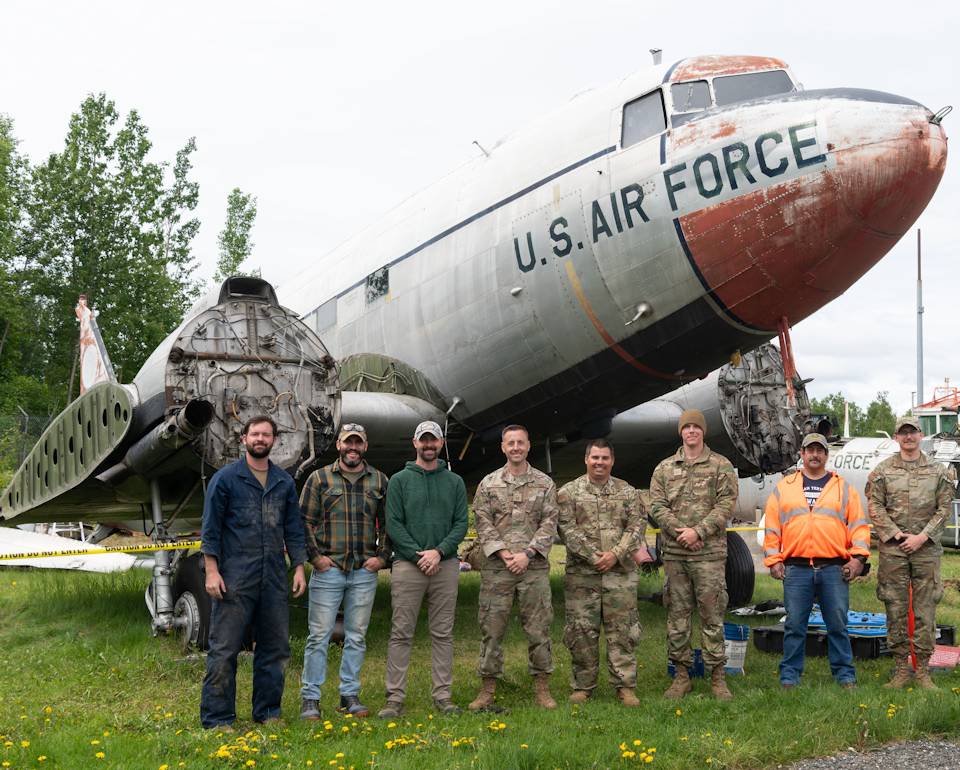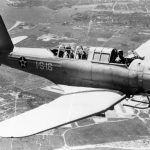An enigmatic aircraft section recently went on display at Royal Air Force Museum London in the UK. The new exhibit features the battered tail section from Short Stirling Mk.III LK488, and represents one of the largest remaining chunks of this otherwise extinct aircraft type, the first purpose-built, four-engined heavy bomber which Britain fielded in action during WWII.
The Royal Air Force’s Bomber Command had three main four engine heavy bombers in operation during World War Two; the Avro Lancaster, Handley-Page Halifax and Short Stirling. While the Stirling was compromised by the limited variety of bombs it could carry, and a relatively poor operational ceiling, the type was nevertheless popular with its crews for its remarkably good handling. Introduced in 1940, Stirlings pressed home the attack against Occupied Europe, ranging as far as Poland and Italy from the UK bomber bases. Later in the war, when the superior Avro Lancaster and Handley Page Halifax superseded its roll as a primary heavy bomber, Stirlings provided important service towing gliders and dropping supplies for irregular Allied ground forces. Of the 2,371 built, no complete example survives in preservation.
LK488 came to grief during the foggy, early hours of October 19th, 1944, clipping the peak of Mickle Fell in the Pennine Mountains during a nighttime training sortie with the RAF’s No.1651 Heavy Conversion Unit. Only the tail gunner, a New Zealander named (W/O) Alan Small, survived the fiery crash, which sadly claimed the lives of F/Sgt Peter Dawbarn Young (pilot), F/Sgt Neil Conway Burgess (navigator), Sgt Bertram George Davis (flight engineer), F/Sgt John Matthew Stack (bomb aimer), F/Sgt Rex Patrick Furey (wireless operator), and F/Sgt George Child (air gunner). All but the RAF flight engineer served in the Royal New Zealand Air Force. A wartime recovery crew gathered the fallen airmen, and rescued the tail gunner, whose turret had fortuitously separated from the rest of airframe. As for the Stirling, the crash site was too remote for a practical salvage operation, so its remains were cut into sections and pushed into a sink hole, where they lay for the next three decades.
Fast-forward to the summer of 1977, when an RAF team dug through the wreck site, selecting a number of components for recovery. They lifted these items from the hillside via one of the service’s Aérospatiale/Westland Puma medium-lift helicopters on September 1st, 1977. The RAF Museum had initially intended to apply these components to the restoration/recreation of a whole aircraft, although that never came to pass unfortunately. Rarely on public view, LK488’s mortal remains appearing in a prominent display at the RAF Museum marks an important step forwards in reminding the public of the valuable service which the Short Stirling provided during WWII, not to mention the courage and sacrifice of the crews who built, maintained and flew them.
Opportunities for a Short Stirling Revival?
The possibility of a fully-restored Stirling one day making its way into a museum display seems unlikely at present, but there are a number of low-key efforts underway to restore/rebuild sections of the aircraft for display. The most significant of these currently active is The Stirling Aircraft Project in Cambridgeshire, which is steadily recreating a Stirling forward fuselage section, piece-by-piece, using many original parts.
There are also several European museums which have significant collections of Stirling parts, including two which feature well-preserved lengths of fuselage which survived due to their makeshift, post-war utility as livestock shelters. The latter museums include the Musée du Terrain d’Aviation Militaire in Vraux, France which has a roughly twenty-foot long length of upper fuselage from LK142 on display, and the Museum Vliegbasis in Deelen, Netherlands which has a similar length of well-preserved fuselage from Stirling LK545.
As for recent wreck-recoveries, a Dutch team using a barge-mounted excavator gathered the shattered remnants of Stirling Mk.III BK716 from Lake Markermeer near Amsterdam, Holland during the summer and fall of 2020. BK716 crashed during a raid on the night of March 29th, 1943 (by coincidence, exactly 80 years ago to the day that these words were typed) sadly taking the lives of all seven men aboard. Thankfully, the 2020 salvage operation also raised identifiable human remains, allowing families to lay their long-lost loved ones to rest. What will happen to the recovered parts from BK716 is presently unknown, although there are hopes for a museum display.
And finally there are presently three identified (one only ‘suspected’) salt water Stirling wrecks. While none of these are currently candidates for recovery, hopefully that will change at some point in the future.
Vintage Aviation News wishes to thank Peter Green for supplying the images of LK488 on display at the RAF Museum. We are very grateful for his help!







